A Rebrand Strategy That Won’t Leave You Reeling
No time to read? Listen to an audio version of this blog below.
There are two kinds of banks: those who get to rebrand and those who don’t. For those who get to initiate a new brand, it’s one of the most exhilarating (and scary) projects you’ll undertake. The entire future of an institution is your responsibility and there are only two options as to how it will turn out: great or terrible. There is no middle ground.
If things go well, you might be looking at a promotion (or another bank looking to snatch you up to help them rebrand). If things go poorly? Well. You might be getting the boot.

There’s a bigger problem, though: It’s almost impossible to immediately determine which way it will go.
Rebranding has an almost supernatural reputation. We talk about capturing the essence of an organization or the spirit of the brand. It’s intimidating. It sounds like you need a medium or a spirit guide, or at least, an Ouija board.
For most, any rebrand is their first.
We want to help you through all the prognostication and soul searching, but we’ll skip the Ouija board and hopefully demystify the process.
That doesn’t mean we can remove the fear. The best analogy I can give for your first rebrand is a bit like skydiving. If you go on a legit excursion, the instructors will spend far more time on the ground training you than actually plummeting from the sky. All of that instruction doesn’t keep you from being scared when you poke your head through the door and see 13,000 feet of nothing separating you from the ground. Having a qualified expert strapped to your back doesn’t keep your heart from racing. But, at some point, you have to jump. When you have to take that leap, we want to make rebranding a little less nerve-wracking.
START WITH THE WHY
Everyone, including wet-behind-the-ears interns, quotes from the gospel of Simon Sinek. Common knowledge doesn’t make it bad knowledge. And that’s the case with Sinek’s number one commandment: Start with the why. So let’s start there. Why rebrand?
The two most common and pragmatic reasons banks rebrand are geographic expansion and mergers.1
The First Bank of Smith County doesn’t make much sense when you expand into Carrol County.
It gets a bit more complex with mergers and acquisitions. Sometimes banks find that their name conflicts in a newly expanded footprint, or you run into the same geographic issues mentioned above. Other times, banks take advantage of the upheaval to create a stronger name or identity.
If this is your “why,” it’s tempting to react with a simple modification. We are now the First Bank of Smith and Carrol Counties. That’s not getting anyone into the branding hall of fame.
Perhaps everyone finally noticed (and agreed) that your colors are outdated or your logo is just ugly. Then your “why” might be aesthetically based. In this case, the easy part is agreeing to change. The hard part is when someone wants to pay homage to the old brand—worried that the audience won’t recognize you. This is a valid fear, one that should be explored, but too much energy can easily be expended on this effort. Too many banks wind up compromising. This is when First Bank of Smith County becomes FBSC.
Let me be clear. This is a bad idea. Please do not be tempted to go into the middle ground of abbreviations. These attempts to hold on to the past (that your clients probably don’t even care about) normally leave you with no brand name at all. Sure, you can cite UPS, GEICO, or AT&T as examples of successfully abbreviated companies, but I doubt your bank wants to spend the BILLIONS of dollars each of those brands spent over years to attain their status. These examples only prove that one can be successful with an abbreviated name. It doesn’t mean you should.
When you rebrand, you can be anything. In the earlier example, the initials FBSC don’t communicate anything. There are many clever ways to uphold existing brand equity and pay homage without reducing yourself to a set of letters that can’t recall any connection to their roots. Want to test it? Without internet search, can you immediately recall what UPS, GEICO, and AT&T abbreviate. Even if you got them right, do you associate their expanded names with what makes these companies successful?
Often your reasons for rebranding are most important to you and your colleagues and often less relevant to your audience and clients. Your reason for rebranding should help inform your rebrand strategy, but it should not necessarily be your rebranding strategy.
Your true “why” has to be deeper.
No matter the predicating factors, you should be rebranding to make a stronger identity. Brand is the foundation of all marketing efforts that will follow. Brand is the fulcrum that helps you with all the heavy lifting to come. If your name and logo are unique and memorable, earning name ID and top-of-mind awareness will be easier and cheaper. A strong brand message can reduce your advertising cost because word of mouth will be easier to create.
Brand strength is your goal. It’s your why. Now you’re asking “how!?” We’ll get there, but we have to ask “who?” next.
WHO IS THE BRAND FOR?
Everything in branding comes back to audience. The better you understand your Who (your audience) the stronger and more successful your rebrand will be. Think about who your rebrand is for. The good news is that most marketers overcomplicate audience. We’re going to help you simplify it.
Before you dig deeper, you need to pick between two audiences. Are you rebranding for your current clients or potential clients? It’s never an equal split between both. And, spoiler alert, it should lean toward potential clients.
Can you rebrand for new clients without alienating your constituents? Yes.
And the answer is so easy we’re not going to expound very much: Just communicate with them. Unless you drastically changed your core offerings, how you do business, or moved a headquarters, you’re probably not going to lose clients—if you communicate the changes with them.
Now that we know there are two groups, let’s add a bit more detail to help guide your efforts.
- Ugly/Outdated Brand — Gone are the days of one community bank competing with another. Even if you’re one of two or three banks in town, you’re competing with national sentiment. In other words, if your brand doesn’t look like it could compete with a national brand, it could be diminished in your audience’s perception. Potential clients will judge your ability to fulfill a mortgage by the intelligence and sophistication of your marketing, and that is based on your brand.2
- Forgettable/Confusing Brand — This is similar to the example above. More than two-thirds of banks share a similar name. This similarity comes from shared mundane terms such as Citizens, Farmers, First, National, etc. There’s a lot of competition for your clients’ headspace; if they don’t remember your brand, you’re not going to convert them.
- Misleading/Alienating Brand — Do you ever wonder why certain clients only have one product with your bank? It could be because they think of your shop as a business bank/ag bank/retail bank, instead of a full-service financial institution. You don’t want to spend money perpetuating that to a broader audience. Perhaps your name is too rural, urban, traditional, modern, etc., so potential clients assume it is not for them. It’s hard to be surprised when Merchants & Farmers is not raking in the retail DDAs when no one refers to themselves as merchants and you already have all the farmers’ business.
“Why” and “who” combine to make up the foundation of a great brand, but we have a few other questions to consider.
What . . . ?
What are we even doing? What’s on the table? What about the logo? What about the name, tag-line, and market position?
It might sound ridiculous, but I can speak from experience: I’ve seen rebrands fail due to the fact that no one agreed on which component could (or should) change.
When there’s a sacred cow—i.e., “the logo is off-limits, but change everything else”—it’s usually due to internal politics. Other times, it’s lack of communication.
Go back to the why and be brave enough to make a firm decision. Let that inform the rest of the process. When someone is stuck on brand equity of a generic name or says, “we can’t touch the logo,” it might be time to hang up the process. A 60 percent rebrand doesn’t yield 60 percent of the results. In fact, it usually has negative returns.
WHEN ARE WE READY TO ROCK AND ROLL?
After everyone gets on board with the process, a sort of euphoria takes over and “brand-launch fever” starts to spread. The symptoms are shortened timelines, heightened expectations, and general lack of awareness.
One of the worst things you can do is shortchange your rebrand timeline.
Start with your launch date and work backwards. Make certain to give enough time for each aspect of the process. Work with your rebrand firm to understand their timeline. Build in time for reviews (remember, your board is going to want to sign off on this). Look at major events on the calendar. Don’t launch your brand in the middle of other large news events such as major elections, local events, or other distractions.
Also, don’t overlook internal buy-in. Schedule an internal launch well in advance of your external unveil. If your employees aren’t on board, it’ll be that much harder to establish your brand in the communities you serve.
All of these meetings and events can be difficult to schedule. Weeks become months. And the best of timelines go bust in a hurry.
And we haven’t even mentioned the other items tied to this: new website, signage, etc. There are many moving parts and your best friends will be a cautious outlook and a comprehensive calendar.
WHERE DOES MY REBRAND LIVE?
There are a lot of existential, highfalutin, and heady elements to doing a rebrand.
Who is my bank? What’s our authentic self? If my bank were a dog, would it be Doberman, a golden retriever, or an Airedale? Conceptual is good, but being grounded in reality will help guide your rebrand from little baby idea to grown-ass rebrand for the real world. Hold your agency and your internal constituents accountable.
The big questions to help ground your rebrand are around where it will live. Think through how your current clients and potential clients will experience the new brand. Are you going to do a big rollout event and announce it? Are you buying media to do a campaign around the rebrand? If so, what type of media do you typically buy and is it appropriate for a rebrand announcement?
Probably the biggest “where’s it going to live” question is about how the new brand will be represented in branches. Are you going to redesign branches? New signage? New paint? These details will help inform your rebrand strategy and make it most effective for the medium where you’ll primarily communicate it. They will also affect your timeline, so proceed with caution.
A REBRAND REALLY IS FIGHT OR FLIGHT
Rebrands are the coolest, hardest, most dynamic, rewarding challenges a marketing team can undertake. Even the smoothest rebrand will push you and your team to articulate your authentic self, simplify complex ideas, and challenge long-held assumptions about your institution. It’s a big, big undertaking to say the least.
It really can feel like launching yourself from a perfectly safe airplane at 13,000 feet. But the reality of rebranding, like the reality of skydiving, is once you’re in a position to do it, there’s really no turning back. You’re prepared. Now jump and enjoy the excitement.
1Is this true? Probably. We did a quick vote around the Mabus office and most people agreed with me, which they don’t normally do.
2Bank embarrassment most often manifests when clients are out to dinner and split the check. Everyone throws their credit cards on the table, and your poor, loyal client has to defend this ridiculously designed card that looks like it was created with MS Paint in the early ’90s.
Introducing the Bank Marketing Blogcast
You’re busy with work. We’re busy helping banks like yours (and writing insights about bank marketing).
We want to make your life easier. So we made the Bank Marketing Blogcast.
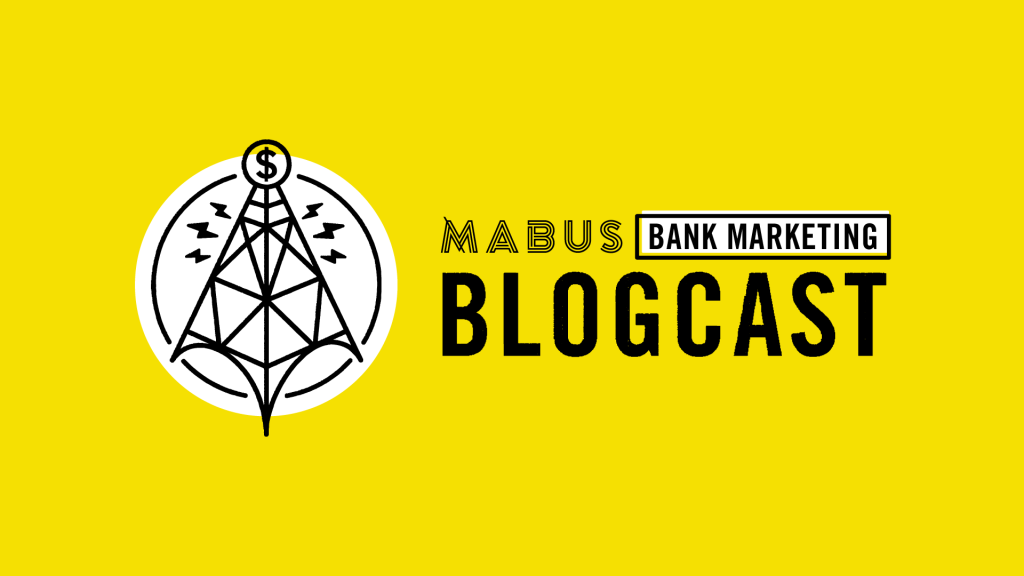
Now, on key blogs, we will offer an audio version of the words you love to read. Think audiobook but shorter (and more valuable for your bank).
Morning commute? Stream bank marketing knowledge straight from your car’s speakers.
Yard work? Crank up the volume on deposit tips.
Gym time? Enhance your body and your mind with career-boosting knowledge.
Our team of strategists and copywriters works hard to put out new insights and tactical tips on our website. Those same words will now be read aloud by the author and delivered straight to the device of your choice.
But wait, there’s more.
We’re also going to throw in some bonus conversations about our insights and tactics so you get to hear from more voices in Mabus Agency, not just the writers. Our designers, media strategists, developers, project managers, production team, and relationship managers have a lot of insight into bank marketing as well.
To make sure each episode is automatically delivered to your device, subscribe to the podcast feed. You’ll get new episodes any time they come out.
Want a quick test? Click the audio link on this page to see what we’re talking about.
No time to read? Listen to an audio version of this blog below. Once you’ve finished, check out the bonus discussion here.
10 Questions to Ask Before You Start the Search
Marketing a bank is harder than ever. New techniques and technologies abound. The never-ending cycles of approvals to adopt change are extended as IT and compliance departments balance advancement against risk. On top of that, most banks are actually performing pretty well—which sounds great…until you’re challenged to do better next year.
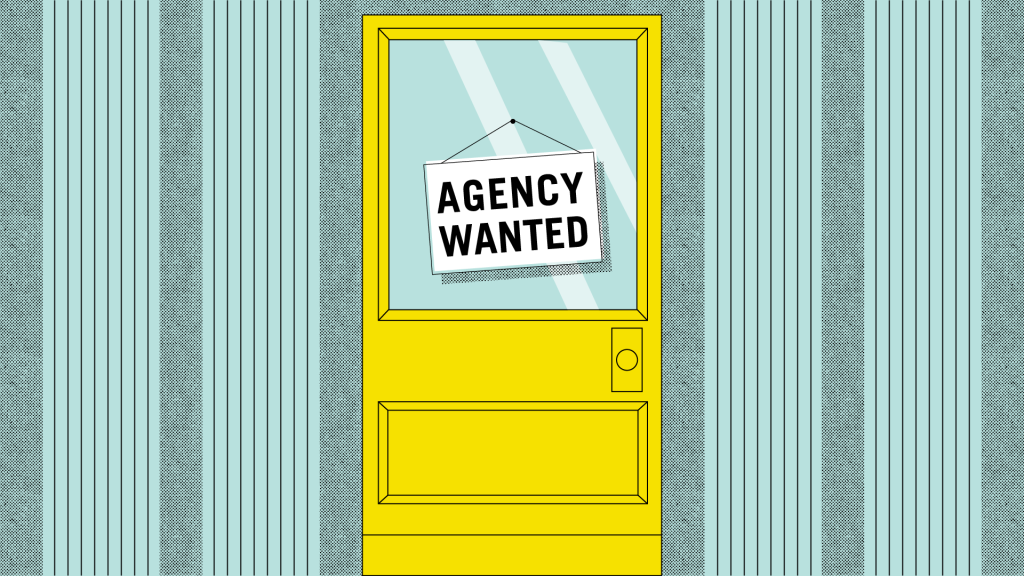
Beyond that, there’s a statistic that looms large. Five years ago, there were 5,818 banks in the U.S. At the end of 2018, there were only 4,687. That’s a 20 percent shrink. And it’s not like the competition went away. Before, you were battling against peers. Now that many banks have consolidated or been scooped up by megabanks, you’re battling giants.
As banks realize the need to grow in marketing sophistication, many are reaching out to agencies for the first time. I want to help you find one—and it doesn’t even have to be mine.
Now, let’s address the elephant in the room: “But you own an ad agency!” I sure do. But I’ve learned a big lesson over the years in this business: good relationships are worth their weight in gold. I’ve learned a few other things in that time, and I want to share some of them with you. There are no “truth bombs” here. Most of it is common sense. These are questions you should ask yourself before starting the agency search, or at least should consider before making the final selection. You’ll not only want to ask yourself, but also ask the agency(ies) that will do your work.
I’ll start with a bonus “thing.” Forget the stereotypes you’ve heard about agencies. Creatives are lazy…Agencies will talk down to you…It’s all like Mad Men. (I’ve had several mentors confirm the realism of that show, but those days have passed.) Some of these stereotypes are true of some agencies, but they are not the norm, and they are certainly not the standard. Many banks enter the agency search trying to find the “least bad” agency and are surprised when they still wind up with a bad agency. Look for the best, and accept nothing less.
Ok. One more bonus thing and then we’ll start. It’s really not about hiring the best agency, but the best fit. It would be a tragedy to hire an agency with terrible creative talents, but it’s worse (by many orders of magnitude) to hire an agency that’s a bad fit. Only consider agencies with creative/technical products that resonate with you, then hire the one you like best. Work with a group you like working with, and the work will be much, much easier and much, much better.
This is why you can trust my advice as an agency owner. Even if I spent the rest of this article trying to subliminally convince you that we’re the best bank marketing firm out there (even though we are), I couldn’t determine if we are a fit. And I’m much more concerned with fit. You should be, too. Trust me.
So how do you find the best fit for your bank?
Ask yourself these questions:
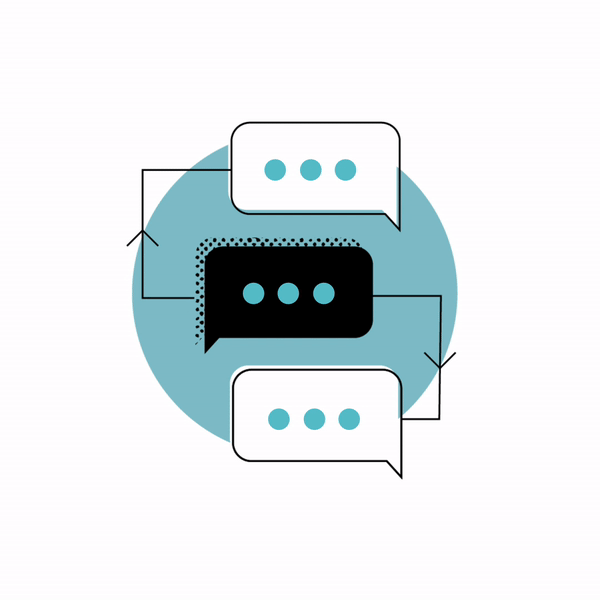
1. Do you want to delegate or collaborate?
There are two general categories for agency relationships. In one, a bank seeks an agency to which they can hand over all work, responsibility, and results. In the other, a bank seeks an agency with whom they can work together to determine the best approach on all work and divide responsibilities for the best results.
One of these works and one doesn’t.
If you want to hire an agency that just does the work for you, I can bet on your disappointment and I’ll win nine out of ten times. An agency is not a rescue, but it is an aid.
Collaboration doesn’t mean equal effort; it just means you’re present. It means you’re working with the agency. You have to be the lifeline into your bank, providing insights that outsiders can’t intuit on their own. Some of these are emotional. Some of these are technical (“we’re about to open a new branch, and we can give you two extra weeks to work on creative by letting you know early”).
A death knell of a bad relationship is when I want to say to a client: “I can’t care more about the success of your business than you do.” If you hire an agency, it’s probably because you need to delegate. But delegation combined with collaboration is much more successful than delegation without any interest in the process. If you have no interest in marketing, it’s going to be hard for the agency to sustain excitement just over the amount of money they’re billing you.
Keep in mind that as the client, you are the boss. Are you ready to lead the marketing efforts or are you looking for a swift handoff?
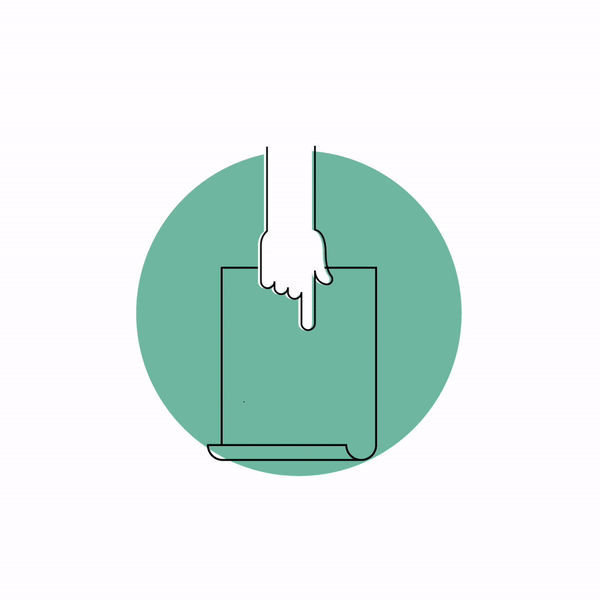
2. Can you clearly communicate your needs?
It might seem obvious, but if I have to say it, you must assume I’ve faced it. Before beginning your search for an agency, you must begin with some internal needs assessment. Per the first item, you have to be more specific than wanting “marketing help.”
Can you articulate (specifically) what you want your agency to do? Perhaps it is general strategic help. Or maybe it’s more focused:
- You need to update your
website. - You need to catch up on
digital media. - You need a new brand.
Whatever your needs, you need to be able to define them internally before reaching out. A large portion of a new agency relationship is building rapport, calibrating vocabulary (making sure you understand one another’s technical jargon) and getting on the same page. It’s not just that you need to be able to communicate your needs to your agency—you need to understand them yourself.
It’s not just about preparation. It’s about clarity and direction. Any new agency will have to onboard to understand the strategy, personality, etc. of your organization. You’ll waste valuable time and money if your agency is charging to not only figure out how to do the work but also what work to do.
Internal clarity is also important. Do your key stakeholders understand why you need an agency and what you need from that agency? Your agency will have trouble nailing down what they need to do if they’re getting conflicting messages from the marketing director, CEO and executive vice president of retail. And you will grow to resent the agency for not understanding.
If you truly don’t know where to start, you might want to engage a company with an “opportunity audit.” Create this as a separate assignment in which you’re asking an agency (or consultancy) to see where you can find the most success with your advertising dollars. This can be guidance around product promotion, advertising technique, audience identification or a combination of these (plus many more factors).
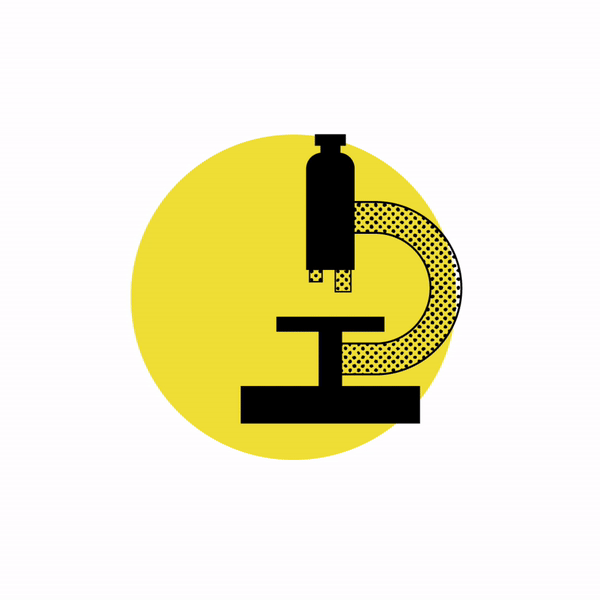
3. How will you know it works?
Not only do you need to know what you need your agency to do, but you also need to understand how to measure the performance of the efforts. That might be timelines, results or other factors (and combinations thereof). Clearly communicating your goals and how those goals are measured is as vital as knowing what you want.
Timeline – Ask your agency how long it takes to complete the types of projects you’ll be requesting and be sure to communicate your absolute due dates early and often.
Results – Marketers who say they can promise specific results—whether it’s click-through rates or actual deposits—are lying. It’s a subjective art. But knowing the targets your campaign needs to hit can help your agency develop a more effective strategy. There are always quantitative indicators of success. While marketing is full of nuance and circumstance, we can certainly see the markers of performance.
Budget – Every agency bills differently and every bank pays differently, but know that every request you make will likely have a dollar amount attached to it. Agree to these term up front and be sure to communicate them frequently.
Many factors that will measure success are kept within the crypts of your bank’s data systems. While Google Analytics and click-throughs can indicate performance, most of us will really be judged by account openings (and those accounts actually being funded), loan growth and share-of-wallet product adoption. You must be a conduit between your bank and the agency to truly track performance.

4. Do you need bank-focused knowledge or localized service?
You likely have two options for agencies: a local agency in your marketplace or a bank-specific agency.
Each has its pros—and cons.
Obviously, bank-focused agencies claim expertise in the same field and bring value from relevant experience, but you might not be able to meet in person as much as you’d like. You must be comfortable using technology to communicate with faraway agencies. Also, be sure to vet their knowledge. I said “claim” on purpose because I’ve seen some bank marketing firms that might know banking or might know marketing, but don’t know both. There are a handful of peers I would recommend at any point and time, but beware bad actors.
Local agencies will provide greater in-person access to a team, but most lack relevant financial industry experience. But don’t count these guys out. I didn’t always know bank marketing, and neither did you. It’s quite possible a non-bank firm will bring new insights. They also have a better understanding of local culture. However, you may find yourself explaining banking principles more than you’d like—saying, “Good idea, but we can’t do that due to Regulation XYZ.” Or you might both miss it. Be sure to have a good compliance backstop if you go local.
Remember that you’ll have to provide what the agency is missing. You might have to relate local culture in one case or explain banking products in another. Only you can decide which route you want to take, but make sure this is a matter that has been discussed and decided upon internally.

5. Do you need one comprehensive solution or a mix of specialists?
Some agencies have a diverse set of services under one roof, and others focus on one area—such as video production or digital advertising.
Do you want to work with an agency that will handle all of your needs, or do you want to be more hands-on, managing individual projects with multiple groups of creatives?
Working with multiple agencies likely means you will have more control over the individual projects. For instance you could find a great fit for general day-to-day needs and add a specialist for a set of animated explainer videos. However, it means you’ll be carrying a much larger workload. You’ll also have to work harder to make sure your brand is consistent from project to project.
Working with an agency that offers all marketing services under one roof means you’ll likely be assigned a project manager to handle some of that workload (if you’re the kind of person who can relinquish it), but also to make sure the designers, photographers, writers and developers are all familiar with your brand standards.
The ability to choose one or many agencies might seem granular, but few consider the amount of choice they have in agency selection.

6. Are you willing to overcommunicate?
Some agencies may be able to complete your sentences, but they can’t read your mind.
Communication breakdowns are likely the most pervasive of all agency problems. Per the first question on this list (notice how many of these questions relate to that one item?), you must be the communicator from your bank to the agency. And you must be willing to overcommunicate.
This isn’t an agency owner passing the buck. No agency wants to tell you that they’re dealing with multiple clients, but it’s the truth (unless you want one hell of a bill). At the same time, they’re working in a creative environment, and you’re working in a bank—just because you’re on the same page with an idea doesn’t mean you will both execute it the same.
On top of all of this, your agency will likely have to do some of the most critical work for your bank at the very beginning of the relationship. This means they’re doing incredibly important work before they fully understand the totality of your business. There’s no other way to do it. If you wait until it’s all comfortable, it will always be too late.
If you’re going through the effort of hiring, working with, and paying an agency to work with your bank, make sure you can give them the benefit of the doubt. An agency’s best metric of success is the success of its clients. It’s improbable they will intentionally undermine you.
Maybe you hate your agency’s project management system or aren’t satisfied with the inconsistent response time. There’s a chance they can accommodate change, but if they’re worth their salt, they’ll at least listen to you. Regardless, both of you should work toward a solution. Your feedback is invaluable in that process.
Let your agency know what you like and what you don’t like about the relationship. Open, solution-seeking communication will go a long way toward overall success.

7. Can you facilitate with transparency?
Keep your agency apprised of the goings-on at your bank. If your bank is expanding into a new market or discontinuing a product, your agency needs to know. They’re charged with helping you develop your marketing strategy, and they can’t do that with only a piece of the information. You’ve likely asked them to sign an NDA (and we already established that you shouldn’t work with an agency you can’t trust anyway) so fill them in on what’s coming up. It will only benefit your bank’s marketing in the long run.
Don’t try to protect your agency’s feelings by keeping your frustrations (or praise) to yourself. Any creative adept at working in collaboration can handle criticism. If your CEO hates an ad, you’re not helping anyone by keeping that to yourself. Your agency will just keep making ads your CEO hates unless they know what not to do. This will do nothing for your relationship with executive management and will only cause further damage.
If you’re the type of person who feels stuck between sides that seem to be at odds, I feel for you. I don’t have any simple advice for you. Even if it’s tough, you’ll have to power through or find someone else on your team to deliver the clear feedback to your agency.
The best agencies keep a running document of the things your bank has historically approved, rejected, liked, hated, benefited from, etc. If you say, “Everyone loves it,” when everyone doesn’t, everyone is going to be frustrated when they bring something similar back for the next project. You might not intentionally mislead, but lack of true clarity can be just as damaging in the long run. Keep in mind—good creatives have been put through the wringer on critiques. Just be sure to be the bridge that helps find solutions by making constructive, valid suggestions for changes to work to meet the needs of your institution.

8. Will you share your budget?
Some marketing directors push back when asked to share their budget. It’s understandable, but remember that you have all the power—you’re still the one allocating spending and signing checks. You should be signing off on every project before kickoff, so the agency can’t run rampant with your budget.
If your agency has a full picture of the playing field, it helps them to build a realistic plan. Just because your agency knows your budget, it doesn’t mean they can (or intend to) spend it. You still have to approve projects.
And like I’ve said a few times already, you shouldn’t work with an agency you don’t trust with this level of transparency.
A good agency partner can provide as much value in planning as in execution—if you let them.
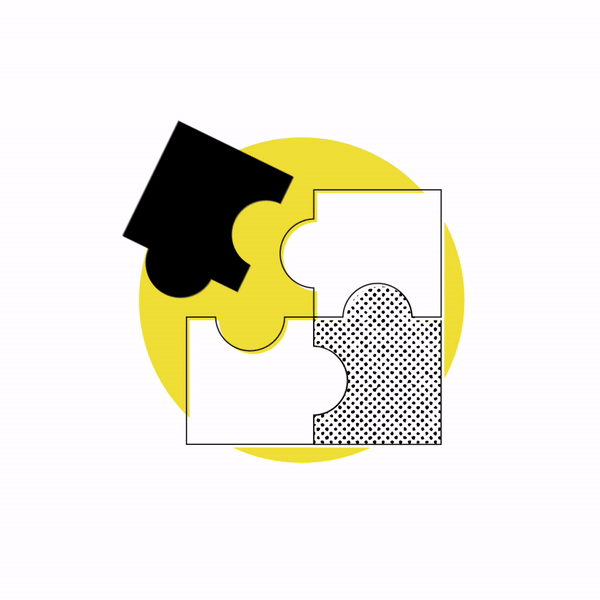
9. Have you considered the politics?
Do you have internal creatives? Writers? Designers? Social media people? Be upfront with your agency about those roles and responsibilities. You will find out quickly if your agency can play well with others. The best agencies will relish the opportunity to arm your in-house creatives (and will appreciate the help in execution).
Make certain everyone is on the same page and has rapport. It’s your relationship to manage. Also, ensure all team members (from your bank and the agency) know each other, understand their own roles, and each other’s responsibilities.
And never leave difficult people in the dark. Too many people avoid involving a negative Nelly. But imagine how negative Nelly will be when she finds out she’s been left out completely. Getting people involved doesn’t mean you have to follow their input to the letter. Listen to difficult people like you would anyone else—get their input and then take the good and leave the bad.
Have as many difficult conversations about roles and responsibilities as you can in the beginning, and the process will run much more smoothly. After all, you don’t want to find out someone you disagree with has been calling your agency without your knowledge and ordering contradictory work. That’s frustrating and expensive.

10. Can you hire an agency that meets similar standards?
In the end, if you can’t hold your agency to similar standards you’re holding your internal stakeholders to, you need to consider finding another agency. There are so many ways that agency/client relationships fail. Any seed of contempt can grow into a wedge if you don’t have clarity, understanding, and open communication. You’re both pushing the same boulder up a mountain, but you’re working together remotely (whether that’s a block away or 1,000 miles across the country). It’s tough work.
On the other hand, finding an agency you can communicate openly, disagree honestly, and collaborate freely with is the stuff of magic. The work you see on our site is built by spending as much time building healthy, elevating relationships as we spend on the creative output. As you look for the best agency for your bank, I hope you find the best fit.
Subscribe to the Bank Marketing Blogcast and never miss an episode.
How much money do you think your household spends on subscriptions each month?
- You or your daughter probably spend $15 on monthly beauty samples from Birchbox.
- You’ve probably spent $10 per meal at Blue Apron for a while (and probably have a few weeks worth of forgotten meals in the freezer).
- You spend $119 each year with Amazon for guaranteed two-day shipping (on most things?).
- Your iCloud, account (which, do you even remember signing up for this?) is $3 monthly.
The average American spends $237.33 each month on subscriptions services (according to a recent Waterstone study)—from streaming video and wellness apps to food delivery and cloud storage.

I think it’s safe to say we are now a subscription based economy.
But for some reason, most banks are under the impression those same clients are unwilling to pay a few extra dollars for the common checking account. Lest you forget, it’s an almost magical product that offers 24/7 access to their money, $250,000 in insurance, and online and mobile banking—and it’s only offered by banks.
Why? We destroyed the value?
How? By giving it away for free.
StrategyCorps offers banks a new way to evaluate and package checking accounts with value-add subscriptions. One of the company’s partners, Dave DeFazio, put it best when he told me, “If we’re talking about not having value, free doesn’t have any value.”
“If we’re talking about not having value, free doesn’t have any value.”
Dave DeFazio
So how do banks offer value?
Banks were asking a similar question after the passage of the National Bank Act in 1933. The act banned banks from offering interest on standard demand deposit (checking) accounts.
This put banks in a precarious position. How could they attract new customers? They did it by giving their clients hip gifts—toasters, wall clocks, and other valuable small appliances. You have a toaster now, but at the time it was a bit of a duplicative extravagance. Everyone wanted one, but didn’t necessarily need it—sort of like an InstaPot today.
When banks couldn’t find a traditional way to show their clients value, they found less conventional means.
In the 70s, banks found ways to (sort of) circumvent the regulations with NOW (negotiable order of withdrawal) accounts, and in the 1980s, small banks began to advertise the gifts as an incentive to open free checking accounts so they could compete with larger banks. They stopped making the gift a part of the checking account’s value, and used it as an up-front lure. By the 1990s, the larger banks joined on the free checking bandwagon and the government even passed the Truth in Savings Act which, among other things, regulated free checking accounts.
Everyone was cutting expenses to compete and the checking account officially lost its value.
In 2011, the passage of Dodd Frank reworked Regulation Q of the National Bank Act, allowing banks to offer interest on checking accounts.
We didn’t have to give away toasters anymore.
But banks did what banks do: chased their tails (the status quo). Instead of evolving the product, we just gave out a new version of the toaster.
We didn’t listen to our customers and instead listened to fulfillment companies who told us to offer free checking with knockoff bluetooth headphones and cheap kitchen appliances.
We need to bring value back to the checking account.
It’s time to make a toaster transition.
I’d be willing to bet your bosses have probably told you (at least twice) to push deposit products in the last quarter.
And conventional thinking (at least in the financial world) is that the easiest way to drive deposits is to attract new checking account clients. And that same thinking says the easiest way to get new checking clients is to give the accounts away. But as we’ve said before, free offers no value.
Well, it’s time to change our conventional thinking. Because the conventional thinking is wrong.
What if I told you the clients who value their checking accounts enough to pay for them value their primary banking relationships more than clients with free accounts? In fact community bank clients with fee checking are three times more likely to have other accounts and products with that same bank (according to a 2018 study from StrategyCorps and Cornerstone Advisors).
Surprised?
The marketplace that once responded to “value pricing” is now more interested in “value added,” but we’re having trouble transitioning from toaster type thinking.
Conversely, 90 percent of community bank clients with a free checking account had no other products with that bank (according to the same 2018 study). Free checking clients don’t value their banking relationship.
So if toasters and wall clocks and knock-off bluetooth headphones are no longer valuable, what is?
The new value paradigm lies in subscription culture. And, I think StrategyCorps’s is providing the best value-add subscription checking product on the market with BaZing
BaZing
Renasant Bank recently partnered with StrategyCorps to create a checking account that features a number of eye-catching value-adds. The account is powered by StrategyCorps’ BaZing product, which bundles benefits—like roadside assistance and cell phone insurance, identity protection, accidental death coverage, a health savings card, and a discount app with more than 400,000 local and nationwide deals —with Renasant’s checking account, all for a subscription fee that ends up being less than most of the benefits would be on their own. Renasant Rewards Extra powered by BaZing was born.
“With BaZing, we find the providers of things that people are already paying for,” Defazio said. “We get good deals because of our buying power and then bundle those products and services and give them to banks for a better-than-market price.”
DeFazio said he is seeing fee-based, benefit-driven checking accounts become more and more popular as the marketplace gets younger.
So maybe you’re thinking, “How do I know what my clients find valuable?” You can start by simply surveying some of your clients. And if that doesn’t work, DeFazio and the team at StrategyCorps have already done a lot of the research for you—whether it means reading their whitepaper or partnering with them to offer a robust benefits account.
Not Convinced?
Free is costing you, and your clients.
Considering everything it takes to operate a checking account, banks spend anywhere from $200 to $500 annually to maintain each account. The problem, DeFazio says, is that, at a typical bank, 30–40 percent of client relationships aren’t profitable.
Not only are these clients costing the bank money, but your bank is also likely costing them. According to the 2018 study, more than a quarter of free checking clients paid ATM fees in the previous year. Nearly as many paid overdraft fees—and the list of fees go on and on, from NSF and debit card replacement charges to overdraft protection and stop payment fees.
Not only are clients who pay for accounts more likely to have more services with their bank, but they’re more likely to refer family and friends. Half of community bank clients who pay for a checking account referred family and friends to their bank, according to the 2018 study. That means your fee-based clients are more profitable, less likely to leave, and more likely to refer your bank to others.
“The buying public are good researchers and know a good bargain when they see one,” DeFazio said. “They also know that free checking comes with fees.”
You get what you give, right? If you give someone a one-time gift—a toaster for instance—you get toast. But, if you give someone ongoing, subscription-based value, you can expect an ongoing, valuable relationship in return.
Content Creation Is a Struggle
I’m guessing you found this post because you Googled something like “How to create content for banks,” probably because you’re a content creator like me, and probably because you’re looking for a boost to reach that next cutting-edge idea. You’ve been staring down the business end of a word processor to no avail. Just that nagging cursor and a deadline that’s either around the corner or just went by.

You’re not alone. Even the greatest storytellers and most engaging brands struggle to produce meaningful, valuable content.
Higher-ups hear the word “content” at a conference and expect the marketing department to publish three pieces of “original content” each week. We respond to those expectations with arbitrary deadlines. We forget to set an intention. We forget why we’re writing in the first place. We forget our names. We turn to Facebook for a reminder and get sucked into meaningless top 10 lists produced by other banks. It’s the circle of life.
Why are we writing?
- To boost SEO?
- To fill our web page?
- To have something to share on social media?
Those don’t seem like inspiring goals. They definitely don’t give us new ideas of what to write about.

Set Your Intention
You need to have a driving goal to inform your content strategy. Posting blindly to your blog or social media platforms is a sure-fire way to leave your readers uninterested and guarantee your own burnout.
What do you want to achieve with your content?
- Make your clients happier?
- Encourage community involvement?
- Increase financial literacy?
- Promote deposit growth?
- Attract a certain type of business owner?
- A little bit of everything?
Once you’ve set a few intentions for your content, you can think of each intention as a bucket and begin filling it with ideas.
Now you just have to start creating it. Or do you?

Content Isn’t Created
We struggle the most when we’re trying to create something from nothing.
Calling ourselves content creators is setting unrealistic expectations. We are, at our best, content curators.
No one is asking you to go full DaVinci Code—tying archaeology, religion, art, history and Crusades-era politics into a riveting narrative. They’ve got Dan Brown and other authors like him for that. They’re coming to you, likely, because they’re a client of your bank, or because they are looking for more information about how to improve themselves and the financial well-being of their clients. You don’t have to create something from scratch, you just have to find the things your clients are looking for and make it available to them.
This may mean gathering facts about personal credit scores or walking entrepreneurs through the process of getting a new business loan.
It may mean providing existing clients with light-hearted breaks from their day by sharing something funny or promoting your employees’ community involvement efforts.
It definitely means sharing the success stories of the people and businesses your bank works with on a daily basis.
Look around you for the stories that already exist, and curate them through your website.

Teach Your Clients
One of the biggest blank spots in financial content is simply explaining banking products—helping consumers connect the dots. We know so much about banking that we forget to tell others who don’t share our banking-is-our-universe perspectives.
Planting your flag as a financial expert is a great place to start.
Every week, it seems a new study or survey comes out proving again how frustrated Americans are when it comes to finances.
For example, a recent National Endowment for Financial Education survey showed only 24 percent of millennials demonstrated a basic understanding of how to manage their money. Another SunTrust Bank survey of people in relationships revealed money is the leading cause of relationship stress.
As banks, our job is to help educate our clients on the ins and outs of finances. After all, we’re the ones employing the majority of financial experts.
Your job, as a content curator, is to identify the areas where your clients are struggling and seek out the experts in each area. Have them produce how-to pieces, or simply interview them and do the writing yourself.
Helping your clients grow their understanding of finances is not just a gesture of noble intention—it generates goodwill from potential clients and can be a boon to your website’s SEO efforts.

Enlist Outside Help
You don’t need to go it alone.
Find the people in your bank who know the most about the topics you want to cover, and enlist their help. No one wants to write a weekly column for your bank’s website, but if every expert writes something about their field once each year, you’ll have generated a year’s worth of rich, engaging content that meets the needs of your clients.
Since your in-office colleagues tend to know their clients and communities better than anyone else, they’ll know the success stories, too. Don’t think of yourself as a writer stranded on an island. Think of yourself as a museum curator, looking for the best stories to share with the public.
Finally, be sure to look outside your company for partners in the community.
“We only advertise mortgages in the second quarter.”
“Why?”
“People don’t buy houses in the winter.”
I don’t think all bankers believe this, but I’ve certainly heard it enough to do the research.
Survey says? There’s something to it.
According to U.S. Census Bureau data, spring and early summer consistently boast the highest number of new home sales.
Don’t believe the U.S. Census Bureau? That’s OK, some people don’t. Here’s the National Association of Realtors existing home sales data from 2017.

Even with two graphs, you don’t see the whole picture. Dig a little deeper, and another story emerges—mortgage lenders who limit advertising during an idealized four-month window miss out on the vast majority of home sales.
More Homes Are Sold Outside the Spring Window
In 2017, more new, single-family homes were sold between March 1 and June 30 than during any other four-month period. That’s a large chunk of business but, in reality, March-June sales add up to barely more than one-third of the 608,000 sales made during 2017.

You see, every month last year, people collectively bought at least 43,000 new homes and 315,000 existing homes.
There’s no way around the numbers. In fact, according to my data, people have bought houses every month for the past eight years. The only reason I say eight years is because I didn’t pull older data. I figure eight years makes a strong enough point. The crazy thing is, during each of those months, people bought almost as many houses they did during any other month.

Here’s my point:
People buy homes all year long. Ignoring this fact when developing your marketing strategy can cost you significant revenue.
Limiting yourself to springtime advertising definitely gives you a shot at snagging some business during the industry’s busiest season, but not advertising during the other seasons will cost you much more. It will cost you more than half of the year’s home sales.
Un-Level the Playing Field
Before we go any further, let’s establish one key point:
The goal of advertising is to make your business stand apart from competitors.
If every mortgage provider in your market saturates a particular four-month advertising window, you’re all competing in an overcrowded marketplace for a limited number of eyes.
But, if most of your competitors have pulled their advertising campaigns by the end of June, you’ll have an empty stage and a captive audience.
When marketing mortgages, or any other parity product, you must pounce anytime the playing field is uneven.
You could be one of many lenders trying to close loans for the 61,000 in the spring, or you could be the only lender closing 43,000 loans in December.
Which scenario sounds more profitable to you?

Grow Brand Identity in Your Marketplace
Imagine getting a call for a favor from an old friend to whom you haven’t talked since the last time you helped him. Then another friend, who bought you lunch last week, asks you to help her, too. Who are you going to help first?
To the latter you may say, “Sure, just tell me when and where,” and to the former, “Nice to hear from you; where have you been all year?”
Coke, Walmart and Apple are top of mind because their advertising is pervasive. It’s why most of us think about them at some point every day—whether we want to or not.
Financial marketing is difficult because regulations won’t let us budge on the “fact,” so we have to find other ways to stand out.
You’d be surprised how often I hear people say, “Oh yeah, I think I’ve heard of that lender. Is it the green one or the blue one?”
Even if your marketplace completely dries up during the winter, I’d still recommend running some degree of “awareness” ads throughout the entire year. The best way to make sure a customer calls you when they’re ready to buy a home, instead of your competition, is to make sure you’re top of mind. You certainly don’t need to be obnoxious (though some studies show that works, too), but you need to be known.
So when other mortgage lenders enter their hibernation caves in July, consider ramping up your awareness efforts. These efforts will certainly translate into business during the fall and winter, but more importantly, it means your business will be top of mind come next March.

Drive Sales All Year Long
Simply put, refusing to advertise outside the spring window is refusing business. Maintaining a consistent marketing and advertising strategy that covers the entire year—rather than just four months—lets you invest consistently in your business and boost cash flow.
In the spring, you might imply your willingness to work faster than the competition. Then, in winter, you can encourage buyers to act while home prices are lower.
Do you want to be a little fish in a big pond, or do you want to be the only fish?
At Mabus Agency, we tell our clients to zig when others zag, but this is a case of zigging while everyone else stands still. If you want to increase loan volume and stand out from the competition, buck the trend and do something different this fall.
How We Support the Best Bank in the South
Money.com named Renasant Bank as one of the eight best banks in the country this week—specifically, the best bank in the South. This only confirms something we’ve known for a decade because we work alongside the bank daily.

So how do we support the best? By being the best. That’s not bragging. We know we’re not solely responsible for Renasant’s explosive growth. But it is a response to an unstated challenge. Iron sharpens iron, as they say, and Mabus Agency had to be better every day to keep pace with Renasant Bank.
We like to think our commitment to daily improvement and work marketing the bank has helped with its growth and notoriety. In fact, here are the six most important ways we’ve supported Renasant—the best bank in the South.
Solidify Brand
Banks were in a tough spot when Mabus Agency began its relationship with Renasant Bank in 2008. At that time, “bank” was unfairly deemed a bad word—generally due to the misconduct of a few bad practitioners. The average consumer was scared, and distrust of financial institutions was at an all-time high.
Renasant Bank spent more than a century building a reputation as an honest bank that operated safely and in the customer’s best interest. That mandate had not changed in 2008, but the actions of other banks forced Renasant to take another look at its tagline “More Than a Bank.”
A phrase that embodied the bank’s commitment to offering comprehensive service had become inadvertently associated with the practices of banks that had expanded services to an unhealthy degree.
So Renasant Bank decided the time was right to make a move. It enlisted the brand experts at Mabus Agency to help find a new path.
After Mabus Agency recognized the bank’s helpful staff and culture of community service as its key benefit, Renasant rolled out “Move to Greater Service” as a pivot away from its previous tag. This straightforward message was easy to understand while utilizing a unique call to action. The new tag was shortened to “Greater Service” as customers and employees alike adopted the rallying cry.
That move to greater service allowed us to see something we’d initially overlooked. The service offered by Renasant’s associates came from a place of greater understanding. As the brand grew in footprint and market share, Mabus Agency recommended doubling down on the service-oriented image with a more permanent tagline, “Understanding You.”
Strategy, Strategy, Strategy
Many banks make the mistake of tackling marketing a la carte. This branch needs to buy a yearbook ad, while that magazine claims all the other banks are buying ads in it. This type of marketing is reactionary. It’ll never get you ahead because you’ll always be reacting to someone else.
At Renasant Bank, every marketing decision is driven by a central strategy. Before approving any new ad request or new marketing campaign, we ask the question, “How can this fit into our overall strategy?”
This doesn’t mean we say no to one-off program ads or Chamber of Commerce magazines. With a central strategy in place, there’s no longer such a thing as a one-off ad because every ad drives the brand’s narrative.
Communicate the Benefit
Bank marketing so often rests on nothing more than puns (How many “Bank on us!” ads have you seen?), tired sayings, or rate announcements. And sure, a truly great rate can carry an ad from time to time—Renasant advertised a checking account rate that was higher than the majority of others within its footprint this year—but the key is showing clients how your product or service makes their life better.
When we develop new campaigns for Renasant, we start with the benefit and actually ask the question out loud. “How is this product actually going to make a client’s life easier?” To the Renasant team’s credit, they develop their products with the same thought in mind.
With the greatest benefit identified, we build a campaign around communicating that benefit as clearly as possible.
Not all advertising has to be clever. It just has to be clear.
Teach the Customer
The average clients don’t understand their role in a banking relationship. And they shouldn’t have to. It’s not their job to learn how to be your clients, it’s your job to teach them to be better at navigating the world of finance.
We helped Renasant Bank launch a content platform, Renasant Nation, to share a combination of helpful and entertaining content. Clients can watch “Building Us,” a show about a family renovating its home, or learn how to use a HELOC to get the money they need for their own renovations.
The “Crafted” series features entrepreneurs with innovative businesses all throughout the Southeast. Helpful explainer videos accompany the series, showing viewers how to take out a business loan or make the most of their cash-flow management tools.
Helping clients become better with their money not only builds loyalty, it levels the quality of your client base.
Be Different
Banking is a parity industry. No one wants to admit that products are similar from bank to bank, but the truth is that regulations don’t allow for much variation. But nothing is stopping banks from looking or acting differently.
Starting with its name, Renasant Bank is certainly different than any other bank. It isn’t the First Community Bank of anything. It owns its name and, in turn, its identity.
And when it comes to creative execution, Renasant’s leadership lets us run pretty wild with ideas. It isn’t scared to chase an idea to its conclusion before deciding one way or the other. Sometimes we get to the end and know it won’t make it past compliance. Other times we walk away with a wildly successful campaign idea.
We license weird songs that we know will stick in people’s heads for days. We continually evolve Renasant’s image while remaining true to its core brand and strategy.
Renasant Bank isn’t scared to be different, because its marketing team and leadership know being different is the only way to stand apart from the competition.
Speak Boldly and Back It Up
Along with an eagerness to stand out, Renasant’s leaders aren’t scared to plant a flag or stake a claim.
The bank’s entire culture is built around ensuring positive client experiences and making an impact within the communities it serves. So when it came time to expand the company’s brand in 2015, we said we wanted to make a bold claim: “We understand.”
In short, we wanted our messaging to mean something—to demonstrate a human understanding of client needs while promoting the array of products and services Renasant offers.
This tagline seems simple on the surface, but it actually creates a pretty high bar for each Renasant associate. Luckily, it’s a bar the associates were accustomed to surpassing.
Does Your Bank Have What It Takes to Be the Best?
Does your bank offer exceptional service to clients, but struggles with the best way to communicate your message? Do you have a killer team of associates in place, but don’t see new traffic come through your door to meet them? Let us meet with your marketing team and show you how we can support and grow your bank.
What makes a bank the best? Time magazine’s Money.com published a list of the best banks in each region, and the list is pretty short—eight to be exact.
Renasant Bank—named the best bank in the South—was one, and we were especially excited because it’s our longest-tenured client.
Since Mabus Agency works with Renasant Bank every day, we know what makes it successful, but we were curious. Were Renasant’s habits unique? It turns out these banks all have a few things in common, and we believe these similarities contributed to their place at the top, and could help your bank, too.
Here are the banks that took the prize in each region. Congratulations to each!
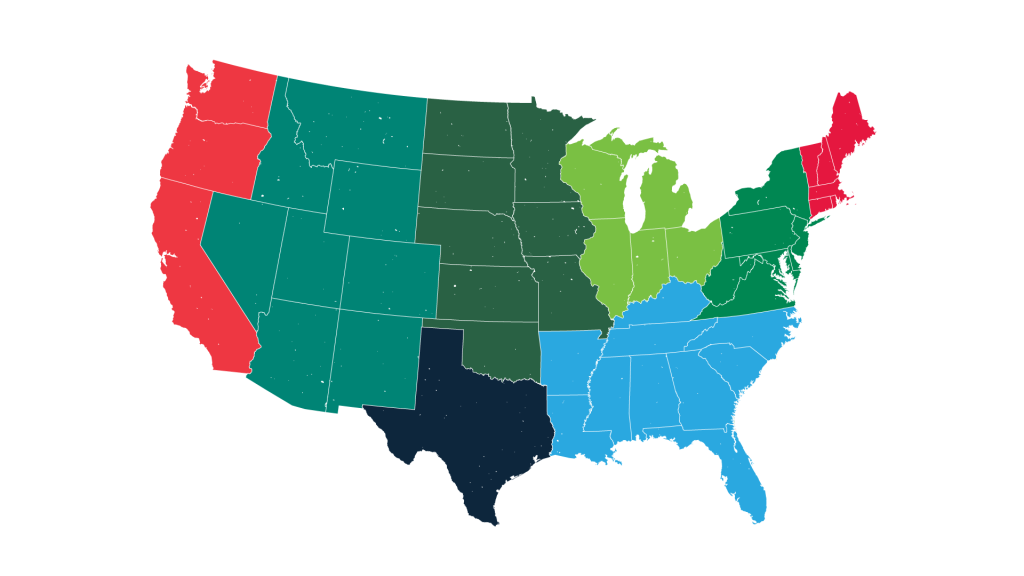
- Pacific – Banner Bank
- Mountain West – Washington Federal Bank
- Midwest – First National Bank of Omaha
- Great Lakes – Huntington Bank
- Mid-Atlantic – Northwest Bank
- New England – NBT
- South – Renasant Bank
- Texas – Frost Bank
If you’re looking to improve your offerings, make sure you can check the box next to these industry-leading factors. We can’t guarantee you’ll be the best bank in your region, but we can guarantee you’ll be a better bank. And your clients will appreciate that.
1. Benefit-Forward Products
Whether it’s Banner Bank’s time-saving bill-pay dashboard, First National Bank of Omaha’s free checking, or Renasant Bank’s ATM fee refunds, most of the banks on this list make their benefits clear. When advertising products, these banks let clients know what’s in it for them up front instead of relying on vague descriptions. Here are a few product descriptions for the best banks:
- “Free means free. And that means no hidden monthly fees…”
- “Get the checking account that gives you cell phone insurance, roadside assistance, ATM fee refunds…”
- “Simplify how your business manages its cash flow with our secure online portal.”
In many cases, banks exhibit FOMO (fear of missing out) and list everything that might bring interest. The banks on this list had the bravery to bring the key benefits to the front.
2. Client-Focused Products
Great benefits come from great accounts. It’s difficult to truly differentiate product offerings from those of other institutions. These banks found nuanced ways to improve products with a focus on client needs.
Most of the banks on this list offer simple, up-front accounts with some combination of no account minimums, service fees, or ATM fees.
But it doesn’t stop with these entry-level products. These banks offer comprehensive upgrade paths that provide impactful interest rates, exceptional technology, and convenient features.
If you want to join the list of best banks, find ways to move from the commoditized field of other banks.
3. Easy-to-Access Digital Banking
Most bank clients live a large portion of their lives online, whether they simply dabble in social media or order all their groceries from Amazon. Banks have taken far too long to adapt to the public’s move toward digital. It’s 2018 and too many banks still have hard-to-find and impossible-to-navigate online banking portals.
Your clients have the entire world at their fingertips. They can order almost anything at almost any time. And they’re comparing their other experiences on the World Wide Web to their experience with your website and online banking.
Each bank on Money.com’s best-in-the-region list provides easy access to its client portals, online account opening tools, and mobile banking services through its website home page.
4. Actual Customer Service
It’s no surprise that many of the award-winning banks have been recognized for superior customer service in recent years. Banner Bank, First National Bank of Omaha, Huntington Bank, Northwest Bank, and Frost Bank were all ranked at or near the top of their region for customer service according to J.D. Power.
Those banks not explicitly rated by J.D. Power make it clear that their associates are ready and willing to address any concerns with easy-to-find contact pages, eager call center staff, and even feedback forms on some sites.
Most banks tout their customer service, but it’s easier said than done. To truly differentiate, you have to live up to those promises of great service.
5. A Brand That’s Different
Banks suffer from a naming problem. Nearly 66 percent of banks use the word state, first, national, trust, or savings in their name. While some have better brands than others, the majority of these banks have a clear identity. Of all the banks on Money.com’s best-in-the-region list, only one uses any of those words. Still, that bank has a clear visual and tonal brand.
Browsing the banks’ marketing materials, it’s clear each bank’s leadership and marketing teams are willing to make a decision one way or the other as opposed to riding the fence and trying to be all things to all people.
A bank that sticks to its identity will attract the clients it’s best suited to serve, and in the end all parties are happier.
Does Your Bank Have What It Takes?
No one’s saying your bank has to be the best in your region, but if you want to grow, you’ve got to be better. There are some clear commonalities between the banks that are doing things right, and pursuing a like-minded approach will pay dividends for your bank and improve the customer experience.
It’s up to you to determine which areas can impact your bank’s culture in a positive way. And you don’t have to do it alone. Find a partner that can help you shore up your weaknesses and keep you moving in the right direction.
Bank brands are the worst.
A few years ago, a group in the U.K. asked consumers what brands they’d like to sit next to at dinner. Facebook, Apple, Nike, and the other usual suspects popped up. But there were no bank brands at the table. More surprisingly, the same survey asked which brands respondents would argue with most at the dinner table. Microsoft grabbed first place—but still, no banks.

Responses to the second question say a lot more about the type of emotions bank brands cultivate within people. Any lingering negative sentiment from the Great Recession has long since dwindled away. Today, banks don’t really stir up anything in today’s consumers.
Couple this emotionless relationship with the rise of the “total experience economy,” where technology and ease of use create today’s best brands, and you’ll find that banks have found a home in the brand gutter. Why do banks insist on sticking to a failing course? Why do banks fall back on the same old process when evaluating who they are, what they want to be, and how to explain that to the larger market?
In banking, we use words like service and friendly and caring and community and cutting edge and innovation and laa de frickin’ da, but in reality, we just spent a few thousand dollars coming up with synonyms for customer service, solutions, and goals. Are we that vanilla, or are we just approaching the “exercise” the wrong way?
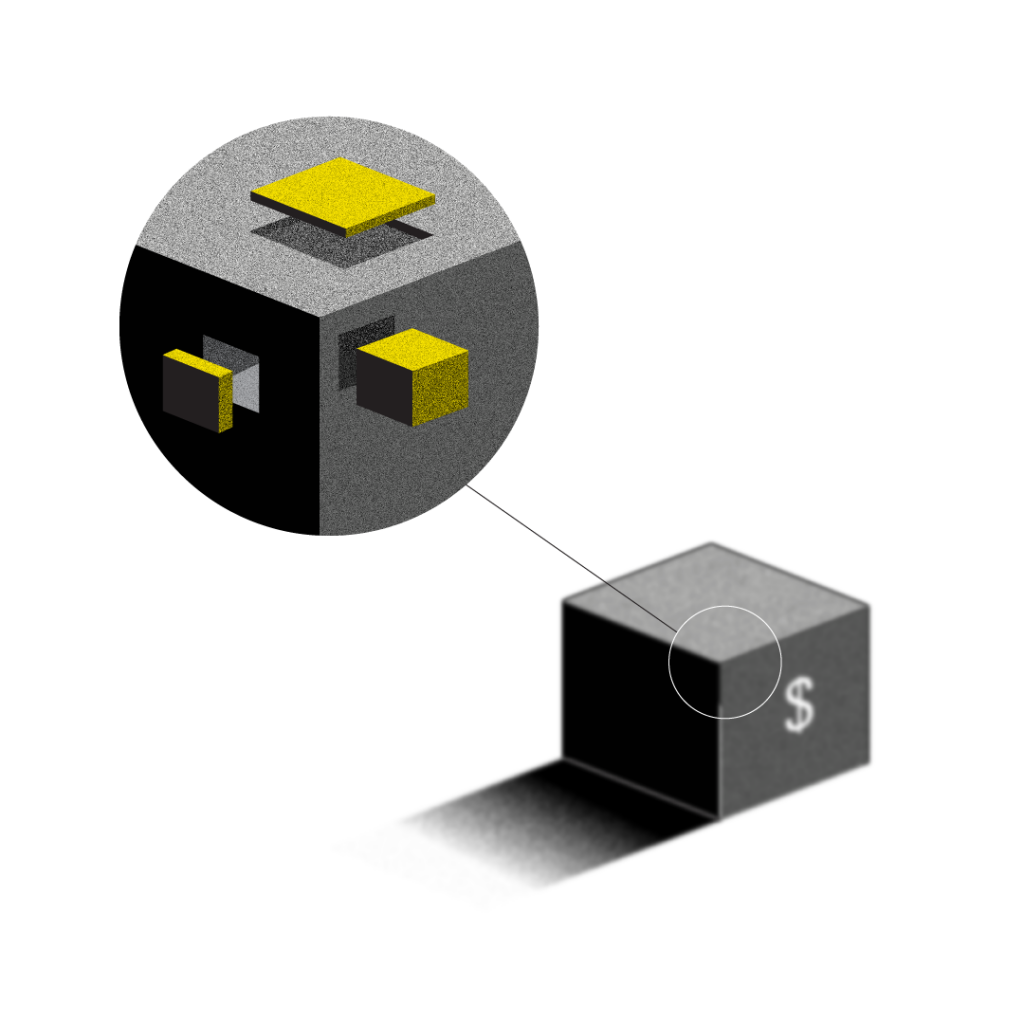
The Branding “Exercise”
Over the years, I’ve been part of more than 20 brand exercises to help banks, entertainment companies, large pharmaceutical companies, and law firms define or rethink who they are. I’ve seen it from every perspective: as an agency, client, creative, and company. All suffer from their own inherent disconnects, but still, I’ve grown progressively cynical of the output from this “exercise” and now find the whole charade quite amusing. If you don’t know, a typical (and yes, oversimplified) branding exercise goes something like this:
- Company hires Agency.
- Agency collects basic information about (e.g., has interns Google) Company and possibly sends a survey to Company employees.
- Agency and Company meet in a room and proceed to discuss the company using a few methods:
Method 1: “If You Were A [Object]…” This is a branding original from the earliest days of advertising, where office supplies, cars, and other inanimate objects are used to elicit descriptive words for how staff members think about their company. This usually results in a mix of “We’re old, but changing” or “We have some old parts, but we’re starting to make some upgrades,” and other nebulous allusions.
Method 2: Draw. Literally ask people to draw your ideal customer, or color something based on what color your company would be. Eventually, it becomes “Doodle because you’re no longer paying attention or you no longer care about this branding session.”
Method 3: The Quadrant or Spectrum. This is a personal favorite of mine. Each person makes a mark on a number of scales (think Fun/Serious, Cutting Edge/Established, or Upscale/Accessible) to show where they think the company fits. Then, Agency determines the averages.
- Agency takes research and flip charts back to the office and plugs in popular words from the meeting before using online thesauruses to come up with new words.
- Two to three weeks later, Agency delivers a positioning statement and messaging document chock full of everyone’s favorite buzzwords spread throughout. Something like…
We help people achieve more and become successful by giving them great advice and service, but still earn a reasonable profit because we believe in innovation and, also, you are not a number; you are a relationship and a client, and we love our communities and believe in hometown values, but we’re not the cheapest, but we are the best.
And then the big reveal. A new tagline: Banking on You. And Us. Together. Forever. One You. One Us. One Why.
- Company feels good, and the new “Banking on You” campaign comes out. Everyone feels like they’ve finally created something special.
But they haven’t. They’ve just created a campaign. And three to five years later, a new marketing person or executive will repeat the process with a new agency, because Company has “outgrown” the previous “brand.”
Exercising the Wrong Parts
If you do the same workout every day, you won’t see your body change very much. Muscles get complacent, and the human body adapts to repetition. The same applies to branding. You can’t change your makeup without giving your system a shock from time to time. You have to change the “weights” and the “routine.”
Adjusting the Brand “Weights”
Your bank brand gets weighed down by a number of internal and external drags. There will always be regulation and compliance, but the larger weights tend to be consumer/market fragmentation, heritage or legacy, and misguided research.
Consumer (or market) fragmentation clouds the brand process for many banks. The moment your community bank leaves its original community and grows into a new town, or moves from a rural to more metropolitan location, your “ideals” are challenged. I’ve heard so many “things are different across the river” conversations in banking. Yes, towns are unique, but there are many brands that permeate towns of all sizes, so don’t let fragmentation weigh down your thinking.
Heritage and legacy have long plagued companies. Need a case study? See Sears. Banks are often old, but more than likely, you’re not who you were in 1924. It’s OK to throw it back to the good ol’ days—nostalgia is a powerful and wonderful sentiment—but it can’t define who you are today. Don’t discount an aspirational component to your new brand simply because the “older markets aren’t going to like it.”
Misguided research is the death knell of so many agencies. In the earliest conversations with clients, they’re often getting piecemeal reports from various company sources. Then, the agency uses the information from those reports to develop broad generalizations about the types of customers the bank serves. All of these assumptions are made from just a few weeks’ worth of data. If there are two things I know about banking, they are:
- There’s a ton of great data about the bank’s customers available.
- No one in the bank has the same information.
Don’t get overly ambitious about something you see in the data unless you’ve verified it with three other sources.
Changing the Brand “Routine”
Branding should focus a company; it should help set the foundation for every message, ad, technology decision, and customer experience that falls under it. This rarely happens in most industries, but even less so in banking.
Heritage, notoriety, and service are often go-to bank brand foundations. Legacy can only take bank brands so far today, and service is too watered down after years of empty promises and the rise of online accountability through reviews, ratings, and consumer forums. We live in a world where many top brands are much younger than their established rivals. Although being in the business for 100 years does mean something to consumers, it just doesn’t mean as much as it once did.
When you want to rebrand or refresh your brand, take time before you reach out to a creative firm to talk through exactly what you hope to accomplish. A goal of cleaning up a logo and creating a consistent, multichannel look and feel is very different than “We’ve outgrown who we are and need to change the way we communicate to customers and the larger market.” If the latter is most true for you, you don’t need an agency to immediately come in and run the show. Take the time to bring your employees and customers together to discuss what your organization is, how it’s changed, and what it needs to get better. And if this is truly a brand you want to live for many years to come, let a few creative companies take their best shot at it. Why limit yourself to one group?
Brand or Deliver
Before you start any branding endeavor, make sure you’re seeking the right output. I fluctuate on how important bank branding is on a year-to-year basis—not because it’s not important to understand who you are and what sets you apart; I just don’t think banks accomplish much when reviewing and/or updating their brands.
In a commodity business, where 90 percent of competitors have nearly the same product set and essentially the same message about superior customer service, will branding set you apart? It should, right?
That sounds like an opportunity to me. But, given that banks always seem to fall into the same routine, should they not shift their attention to simply out-executing the competition? Are the best brands today not the best customer experience companies that also filled a timely need in the market? Think Uber, Netflix, Amazon…do you know what any of these companies really standfor? Or do you just value the convenience and experience they provide that far outpaces any similar service?
This brings up the almighty question: Does traditional branding really help banks succeed? Yes, you need consistency in look, message, etc., but beyond brand consistency, should your branding strategy be more of a customer experience strategy? When will a bank come to the table and not only say, “We make banking easy,” but actually devote multiple positions to ensure that every customer touchpoint is perfected? When will banking COOs, CTOs/CIOs, and CMOs work through a CCO (chief customer officer) who has to approve each change based on what it will do to the customer experience?
In other words, when will banks stop branding and start delivering?
When’s the last time an “SEO expert” emailed you, promising to make all of your online marketing dreams come true? You know the one:
Your bank website isn’t optimized, and we drove 8000% growth and boosted sales by a lot for a client, so call us!

Hopefully, you deleted the spam and moved on with your day.
The truth is, there’s no magic bullet for search engine optimization, which helps your website rank higher in search engines. And the promises you’re receiving in those eloquent sales emails don’t tell the whole story
SEO is hard. It’s more than just three to six months of enhancements—it’s a long-term, persistent commitment. It’s an iterative and experimental activity at times. And it can be tough for marketers to see the light at the end of this sometimes arduous tunnel.
But, when done right, SEO delivers some of the strongest results in modern marketing.
What’s the recipe? Let’s walk through the journey that led to a recent win for one of our commercial bank clients.

The Strategic Start
Like any good marketing initiative, a sound strategy goes a long way to determining success. This means having a solid understanding of the level of competition for any search queries (the exact terms people are searching for) you want to win while making sure you have the content to back up the terms people are searching for, and setting up analytics to measure success and ROI.
Note: specific details of this program were left out to protect the integrity of our client’s competitive marketing program.
In this instance, we focused on niche lending with a key marketing goal of keeping acquisition costs lower than they’d be using traditional methods (e.g. trade events and publication advertising). Our strategic process included:
1. Creating a roadmap for producing content, testing, and optimizing, then making adjustments as needed.
2. Developing targeted content covering key focuses within the niche industry. Topics ranged from broader business best practices to supplier chain specifics for the industry.
3. Competitive analysis of competitor lenders and “share of search” companies.
The SEO Technicals
If you want to achieve your strategic SEO goals, your website has to address some foundational “technicals” to ensure it’s looked upon favorably by Google and other search engines. This work involves making sure your site is optimized for mobile, loads well, has proper structure and tags, and includes no broken links or structural issues that would cause a search engine to “demote” your site.
It’s nerdy, but important, groundwork for your future success.
When we began, our client’s website was dated, poorly built for the new mobile world, and had a number of structural issues. So, we helped them redesign their site, with all of the modern cues for search engines. This immediately helped our client rank better for their core brand and services. Google recognized them and these foundational elements set up our client for their next endeavor: search-oriented content marketing.
Organic search alone doubled within a month of the changes and increased 6X within four months.

The Tests, Misses, and Hits
Once you’ve mastered the fundamentals, the real fun begins. Great content marketing is goal-oriented. Some of your content should be fun, some should be educational, and some highly visual and conversational for social media. All of these categories of content can impact search, but more often, you need an “organic search content program” to go along with the other information you’re producing. This category of your content program is focused on performance above all else. If an article begins to win for a term in search, it warrants further optimization and additional content development to capture even more terms. If a content piece on your website doesn’t perform well, it needs to be revised, re-purposed, or archived. Again, this area of content is all about the performance. And great performance requires practice, effort, and learning through some failures along the way.
Our client’s organic content program combined research with well-structured writing to deliver the best possible chance for the organization to rank for important search terms. The process (at least to the level of detail we’ll share) looks like this:
1. A content calendar is built from the strategic work for each quarter of the year.
2. At the end of each month, content is scored on its effectiveness (search ranking MoM change, the effect on related content, etc.).
3. Every quarter, content is picked for optimization, expansion, and/or archiving. Keep in mind, some content may “win” up to a year or two later thanks to other influencers (e.g. a link from a prominent website, Google ranking for your site’s authority on a subject, etc.).
4. This process of content evaluation is repeated alongside the more technical keyword research. All of these evaluations provide a nice feedback loop back to your content strategy which can (and should) evolve based on the performance of your program.
It’s important to note that search engines don’t always behave the way you think they will (or how you’d like them to), but a consistent and thoughtful process will yield results. This isn’t 1998 web SEO—you can’t simply create 50 web pages stuffed with keywords and expect results. Rather, you must first create optimized content across multiple channels then weave it into your overall marketing and audience strategies. Most importantly, it should feel natural. Our client saw 90 days of minimal impact before doubling the traffic they’d already gained from technical improvements.

The Return on SEO
Once you’ve established a process for and consistency within content development, you’ll begin to see the wins increase. Google will assign more authority to you in certain topics—and searchers will follow. This is traffic you’d never see otherwise! And while you made an initial investment, the longevity of your ranking for a particular keyword far outpaces any campaign advertisement.
For our client, ROI was straightforward (and outstanding). The initial investment made in content now provides more 20,000 new website visitors a year, specifically aligned with the niche audience they were targeting. Think about that. When can you market to an unknown group and achieve the same volume of near-perfect intent? With a good qualifier tool and only a half a percent of that traffic converting into a lead, that’s 100 new, high-dollar leads that never would have made it to their organization otherwise. For one year, ROI projects to 300%, but that doesn’t account for the lifecycle of that content—which will continue to produce results for years to come

Interesting in learning more about how SEO works for banks and when you should (and should not) pursue it? Reach out to us.


